Jan 08, 2025 Reflection: The Essential Ingredient for Impactful Facilitation and Teaching
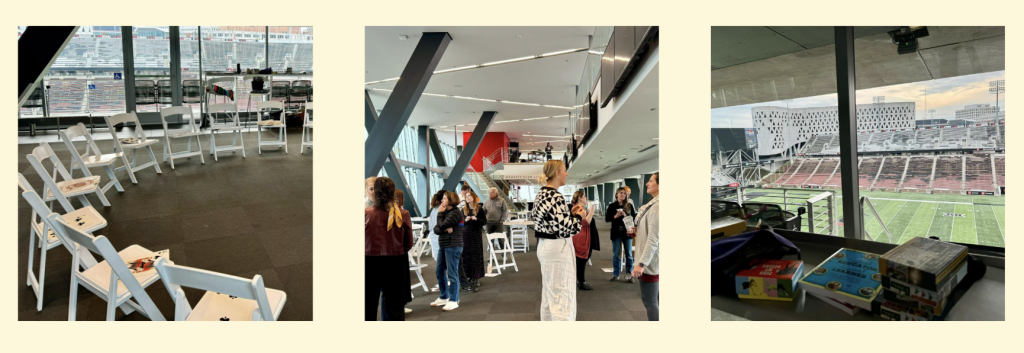
I just returned from my second trip to the University of Cincinnati, where, in a light-filled pavilion above Nippert Stadium, I facilitated an active reflection workshop. It has been an honor to work repeatedly with instructors and advisors in the design and engineering co-op programs who provide meaningful, experiential learning to students through internships. It was fantastic to be asked back to UC to present on a topic so near and dear to my heart—bringing learning to life by weaving reflection throughout experiences in engaging ways.
Active Reflection
 “We do not learn from experience. We learn from reflecting on experience.” This quote, often attributed to John Dewey, speaks to the power of reflection. The UC advisors carved out time for these workshops because they recognize that reflection is the essential ingredient in education, creating lasting lessons and promoting growth in learners.
“We do not learn from experience. We learn from reflecting on experience.” This quote, often attributed to John Dewey, speaks to the power of reflection. The UC advisors carved out time for these workshops because they recognize that reflection is the essential ingredient in education, creating lasting lessons and promoting growth in learners.
Reflective practice fosters an emotional connection and helps the learner internalize lessons, create ownership, and develop insight—one of the most critical life-long skills to acquire. When we engage learners in ongoing reflection, we help them retain and apply lessons to other areas of their lives and promote their ability to become more thoughtful learners.
The Brain, Learning, and Reflection
Educational neuroscience shows us that reflection creates context and promotes the development of multiple pathways to learning and meaning-making. Neuroscientists call this patterning — the process in which the brain searches for patterns to construct meaning from the input it receives. Read more about the neuroscience of reflection here.
Impactful reflection begins the moment a group walks in the door- if not before. Reflection is a practice, not an event, and can be woven throughout experiences in many creative ways. Creating an inclusive and well-designed welcoming reflection activity (sometimes called a warm welcome, first five, or hook activity) to start a session primes reflection and creates an opportunity for participants to make positive connections with their peers. It also sets up context around a lesson or experience.
Planting Seeds for Reflection
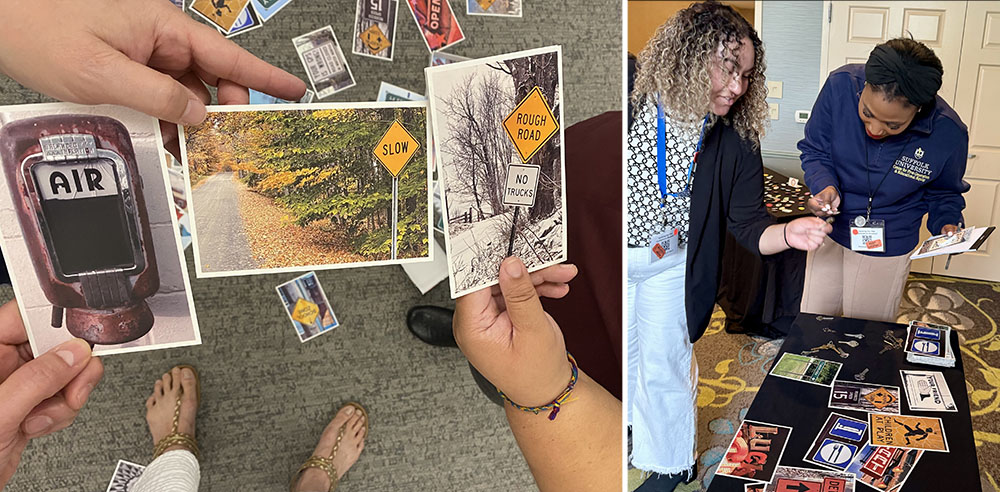
You can be very intentional about reflection by using a reflective welcome activity targeted at your program’s purpose. At UC, I laid out my new “Everywhere-a-Sign” postcards. As participants entered and gathered for coffee, I invited them to choose a sign representing the school year’s direction or the direction they would like to take for the second half of the year. Read more about welcoming reflection methods here.
Before the Experience
I often begin reflection prior to a learning experience by sending a welcome email with a program goals form. For online offerings, I often include a message ahead of time inviting group members to start reflecting before we meet. For example:
“I invite you to bring an “artifact” from your recent experiences as a facilitator/educator/coach. This
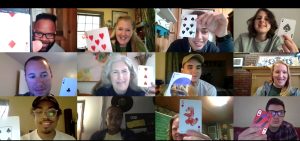
object could be a tangible artifact from your teaching or facilitating experiences, a success story or highlight from recent work, an object representing a lesson learned, a silver lining, or a challenge overcome. This artifact could also represent an opportunity, inspiration, or hope for the future. During the session, we will blend these “artifacts” of experience into some of our interactive, reflective activities and dialogue.
If you would like examples of my pre-workshop goals forms or welcome messages, email me at jen@experientialtools.com
Start Small for a Bigger Impact
A big focus of our workshop was rethinking the default settings often used in facilitation and teaching. We started by using smaller reflection dialogue structures before the large group sharing circle. To read more about small group dialogue activities, click here.
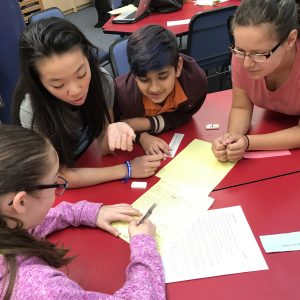 Repurpose Icebreakers and Games for Reflection
Repurpose Icebreakers and Games for Reflection
Over the years, I have repurposed the community building activities I traditionally use at the start of a program as active reflection techniques facilitated throughout a workshop or class. My favorite rapport builders— Handshake Mingle, Concentric Circles, Trade and Share, and Commonalities Mingle— engage groups in active reflection and dialogue for social and emotional learning, advisory, morning meeting, or academic training content exploration.
Some of my favorite community-building and active review games, such as Team Tally, Anyone Who, Charades Race, Bag of Nouns, and Peek-a-Who, can be used for reflection and celebration.
Sequence Reflection and Processing in the Middle of Experience
Effective facilitators and educators carefully sequence their programs so that lessons and activities build upon the previous ones. They start with less intimidating methods to build comfort, trust, and rapport in the group before increasing the challenge. I encourage facilitators to do the same with reflection. To read more about sequencing reflection, click here.
Along with thoughtful design and sequencing, the language we use in reflection is powerful. To read more about Reflection vs. Debriefing, click here.
Harness the Power of Metaphoric Reflection
Symbols, images, and objects help people communicate their thoughts and create meaning from their experiences. They spark emotions and help people understand and communicate abstract concepts that cannot always be translated into words. To read more about some of my favorite metaphoric techniques, click here.
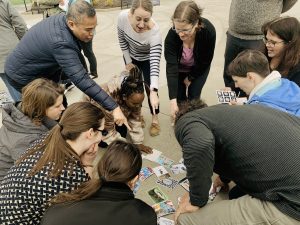 Facilitate Optimistic Closing Activities and Appreciations
Facilitate Optimistic Closing Activities and Appreciations
Like the UC Coop advisors, many of you are wrapping up courses or semesters. An optimistic closing reflection can help you tie it all together with a meaningful and optimistic reflective ending before the holiday break To read more visit this post:
Optimistic Closing Activities to Celebrate, Reflect, and Connect to Future Learning
References and Resources:
See these previous posts or the Inspired Educator or Tips & Tools for the Art of Experiential Group Facilitation books for more ideas.
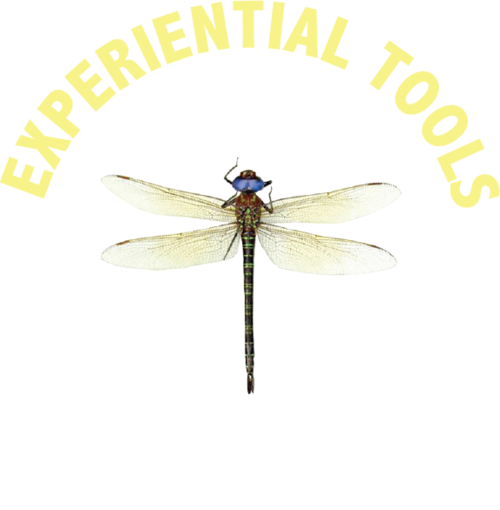


No Comments